Earlier this month a photographer named Hoda Rostami came under a week of intense and sustained criticism on social media. The reason was her role as executive director of Fam Trip, an Islamic Republic-backed tourism initiative that stands for “Familiarization Trip”. Foreign visitors have lavished praise on the program on their Instagram pages, while Rostami herself has posted picture after picture of non-Iranian women in “correct” hijab visiting historical and cultural sites – always beaming, almost always stood in front of some beautiful tilework. Then there were the responses.
Iranian social media users, particularly women, accused Rostami of distorting reality and feeding tourists a bogus idea of what really goes on in Iran. Normalizing injustice, or doing what any tourist board head would be expected to do in an authoritarian environment? Or both? Here we’ll lay out the Fam Trip story so far, so readers can judge for themselves.
The Missing Years
Hoda Rostami grew up in Sweden and went to school there, in an environment worlds away from that of her peers in Iran. In her own account, in 2009 – the year the pro-democracy Green Movement protests exploded in Iran and saw hundreds of activists and journalists jailed – she bought her first camera and took her first collection of photos in the country. Entitled Forbidden City, the set featured a number of photos of Iranian women out in public without the mandatory hijab. “This collection is mostly about developing ideas that seem to have been forbidden in this city for years,” Rostami wrote at the time.
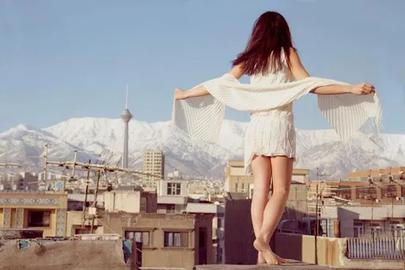
It was a far cry from Rostami’s professional output today, which instead – implicitly or not – beautifies the veiling of women in public spaces of all kinds. This and other more recent photos of hers present a topsy-turvy, but always rosy, vision of life under the Islamic Republic: perhaps no better symbolized than by one image that shows a couple sharing a forbidden kiss on the dried-up Zayanderud riverbed in Isfahan, the site of recent mass protests and for Iranians a symbol of near-catastrophic drought and decades of water resource mismanagement by the state.
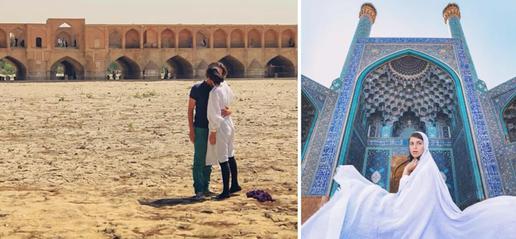
IranWire contacted Rostami to ask her how it was that her ideological, and artistic, leanings had changed seemingly so drastically over time. Like this and other queries sent to Rostami, it received no answer.
The Fictitious Iran
In 2019, Mehr News Agency and its English-language twin the Tehran Times published glowing reports about Hoda Rostami’s Fam Trip project, portraying it as on the vanguard in the “war of narratives” over Iran. According to these reports, Fam Trip is financed by the Ministry of Cultural Heritage, Handicrafts and Tourism, and is aimed mainly at influencers. Foreigners with big social media audiences are invited to visit tourist sites in Iran, for free or at a discounted rate, and then post photos and videos to their feeds that will encourage others to do the same.
The reports claim that similar drives took place during the Ahmadinejad era but enjoyed little success. Under President Hassan Rouhani, however, the effort was taken far more seriously, to the point that and even Western media outlets broadcast videos that followed the regime’s line on Iranian culture and civilization over the reality (a theocratic dictatorship smothering centuries of real heritage). This coverage characterized Iran as an open country where women freely rode bicycles and gender equality reigned supreme, even in the homes of people with little means.
Hoda Rostami’s Fam Trip project turbo-charges this by proposing tourists visit Iran with an approved, Iranian guide, and impart what they have to say to other Westerners. Mehr reported that the project, also dubbed “FeelIran”, had already enticed influencers from 12 different countries to Iran by 2019. Today its Instagram page has more than 262,000 followers.
In October 2019, writing on her own Instagram page, Hoda Rostami reported that the “first phase” of the project had been completed. “Never in my wildest dreams did I imagine I could feel so proud for doing something in Iran... Thanks for your trust,” she wrote.
Besides the Ministry of Cultural Heritage and Tourism, Rostami’s project has also been supported by Executive Headquarters of Imam's Directive (Setad), the umbrella organization that manages the economic empire of Supreme Leader Ali Khamenei. Specifically some of its “ecotourism” initiatives were backed by the personal businesses of a man who has publicly stated the water crisis in Iran does not exist.
The drive seems to be working, however, as pictures posted by FeelIran/Fam Trip beneficiaries show. In one posted image, in answer to the question “Are [you] comfortable [wearing] the Iranian hijab and clothes?”, a blonde woman answers: “For me it was OK to wear hijab, and luckily it’s also good protection from the sun.”
Another picture shows Hoda Rostami sitting next to a man eating a meal; online critics pointed out that if any ordinary Iranian women dressed the way she did in the shot, they would have been abused and potentially hauled off the street by the morality police. The IRGC-affiliated Mashregh news has thrown its weight behind Rostami during bouts of criticism, claiming the naysayers were participants in an “expatriate zombie attack”.
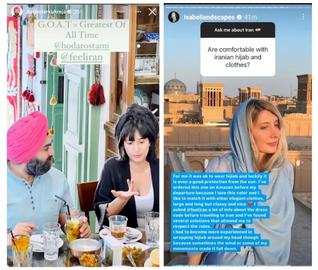
The Side Hustle
What Hoda Rostami did between 2009 and 2019 remains an unknown quantity. But even aside from government and Setad contracts she has found other ways to monetize the apparent ideological flip, which has brought droves of new viewers to her social media sites.
Rostami’s Instagram page identifies her as the “creative director” of “Rostudio”, another page with more than 47,000 followers that directs visitors to an online sales site. It features products previously featured in Hoda Rostami’s social media feed, bearing hashtags like #Home, such as a wooden bed selling for around 14 million tomans (US$440 or $3,370 at the official exchange rate) that was displayed in her own home two years ago. Either price is around twice the average Iranian monthly wage.
IranWire contacted a number of residents of Iran to ask what they thought about the prices. One fairly representative answer was: “These prices are too much for even the middle class, and for no reason at all. You can find the same vases, chairs and tables at Hasan Abad Square and in Yaft Abad [in southern Tehran] for half the price. A chair for close to five million tomans [$156/$1,203]? What is going on?”
The War of Narratives
As mentioned above, Mehr News Agency and others described Rostami’s project as an important front in a “war of narratives” over the real Iran, in which all members of the free media have supposedly contrived together to present Tehran as a human rights-abusing, environment-trashing pariah state. Women are in prison in Iran today for running afoul of hijab laws which, the state would have people believe, is something to be celebrated.

That being the case, what has Rostami said about the side she and others are on? When challenged about the balmy vision of Iran put forward in her photos, Rostami replied: “Why do you think we are not allowed [to dress as we choose]? [Because] we are afraid of being judged.”
The same year that Rostami reported that the first phase of her FAM Trip project was complete, three women by the names of Yasaman Ariaee, Monireh Arabshahi and Mozhgan Keshavarz were sentenced to a total of more than 31 years for not adhering to mandatory hijab. They were not afraid of being judged. In the second year of Rostami’s project, Saba Kord Afshari was sentenced to 24 years in prison for the same “crime”.
The Hostage-Taking Risk
Earlier this year, the Iranian-British dual nationals Nazanin Zaghari-Ratcliffe and Anousheh Ashoori were released in exchange for £400m in blocked Iranian assets. French-Iranian academic Fariba Adelkhah is still detained in Iran. Benjamin Briere, a French tourist, has just been sentenced to eight years in prison for “spying” and “propaganda against the regime”. All of these people came to Iran voluntarily.
Given the risks and the Islamic Republic’s known policy of hostage diplomacy, countries such as France, Sweden, the United States and Canada have warned their citizens not to travel to Iran. These international travel advisories may not get seen by Hoda Rostami’s potential tourists before they fly, despite the fact that they more than anyone else will be on the radar of the regime.
Fam Trip and Neo-Orientalism
Parvaneh Hosseini, an anthropologist and professor of Near Eastern Studies at the University of Arizona, gave IranWire an academic’s perspective on Fam Trip and why it might be proving popular among Westerners.
For one thing, she said, stories about Iran that circulated in the West after the 1979 Islamic Revolution positioned it as a “backward” country in the grip of a repressive regime. Since then, she said, there has been a “competition” to repudiate this view by depicting the modernization of the cities, the natural scenery and public life.
Especially during the Rouhani presidency, there was a state-backed attempt to export this version of events. “The goal,” Hosseini said, “was to bring tourists to Iran so that they would become ‘ambassadors’ for the Islamic Republic – and undermine both protests outside Iran against what is happening inside, and the stories and films about issues such the fight against compulsory hijab. This was how we arrived at projects such as Hoda Rostami’s, which are supported by enormous budgets, very much like pro-Islamic Republic lobbies in the West.”
But there is, Hosseini said, another side to the story: orientalism. “Edward Said says that Western orientalists view ‘the East’ from above, and make eastern people into ‘others’. Often, in their museums, ‘Eastern’ people and Eastern fauna were the subjects of study together, as though they were in a zoo.
“Later, they tried to disavoc this approach. But in recent years, we have been faced with the phenomenon of neo-orientalism: individuals who now belong to these same societies look at themselves through Western orientalist lenses. That is, they make the clichés of themselves. And since these clichés come from inside, they are seen as valid.
“This approach foregrounds what is ‘good’ and what is ‘beautiful’ [about the subject society] and has an element of exaggeration. A tourist is neither equipped for, nor aims to, arrive at a deep understanding of a country’s people. Whether seeking calm or adventure, they go out and take pictures, and Fam Trip-style tools provide the adventure.
“This time the animals are neither in cages, nor stuffed and displayed in a museum. Instead, they’re like safari parks, where animals roam seemingly free and the tourist drives around and takes a few snaps. This is not a real exchange. The result is a picture of a Western woman who is standing next to some tilework with a token hijab on. Then she returns to her own life and the liberties and rights that she normally enjoys.”
Hosseini believes that for certain types of tourist, mandatory hijab is “as interesting as a tiger or a giraffe’s skin in the zoo”, when in reality, it is “a pillar of patriarchy”: “It’s exciting, like when a visitor to a zoo paints her face like a tiger. It would no longer be exciting if she knew she had to wear it forever.”
By tying together the “war of narratives”, promoting reflexive orientalism and normalizing hijab as an exotic decoration, Hosseini believes projects such as Fam Trip normalize the Islamic Republic and hide the injustices it perpetrates: “This propaganda serves the Islamic Republic. It builds up stories to exploit when necessary, like when the state is challenged on its clear violations of the human rights of the Iranian people.”
visit the accountability section
In this section of Iran Wire, you can contact the officials and launch your campaign for various problems




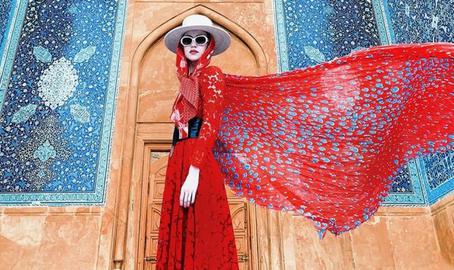

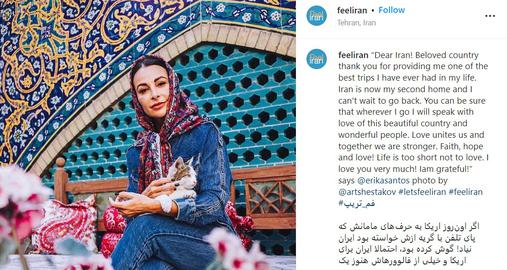
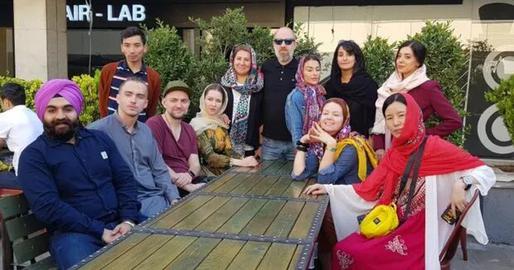
















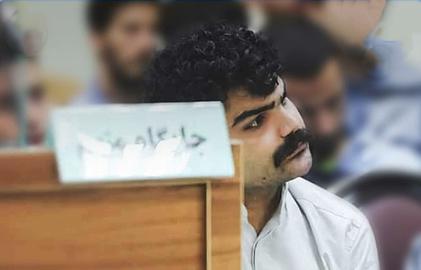




comments